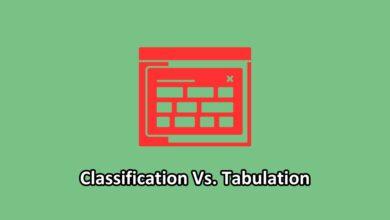Communication is a vital part of our everyday lives, allowing us to connect and interact with others. Verbal and nonverbal communication are two distinct types that play a significant role in how we express ourselves and interpret messages from others. In this blog post, we’ll explore what sets these two forms apart, examine their strengths and weaknesses, and ultimately answer the question: what’s the real difference between verbal vs nonverbal communication?
Verbal communication is the use of language to transfer information from one person to another. Nonverbal communication is the transfer of information without using words.
Verbal Vs Nonverbal Communication (Comparison Chart)
| Verbal Communication | Nonverbal Communication |
|---|---|
| Verbal communication is the use of words and language to convey a message, meaning, or information. | Nonverbal communication is the transmission of information through gestures, facial expressions, body language, and other non-verbal cues. |
| It relies on spoken or written words, symbols, or a language with defined meanings. | It relies on body language, facial expressions, gestures, and visual cues to convey meanings. |
| Verbal communication typically occurs in real-time during conversation or interaction. | Nonverbal communication can occur before, during, or after verbal communication, providing additional context and meaning. |
| Verbal communication can be easily recordable and can be stored for future reference. | It can be difficult to record and store Nonverbal communication, as it relies on momentary expressions and actions. |
| It provides precise and explicit information. | It can convey subtle nuances and emotions that may not be easily expressed verbally. |
| It can be subject to language barriers and cultural differences in meaning and interpretation. | Nonverbal cues often have universal meanings but can also vary across cultures, requiring contextual understanding. |
| Verbal communication requires active listening and comprehension of words and meanings. | Nonverbal communication may not require active listening but relies on the interpretation of non-verbal cues and contextual understanding. |
What is Verbal Communication?
Verbal communication is the sharing of information between two or more people using words. It is a key part of human interaction and is one of the most important ways we share our thoughts, feelings, and ideas.
Verbal communication can be either spoken (like face-to-face conversations or telephone calls) or written (like emails or letters). It is the primary way we communicate with other people, and it has the potential to be both powerful and effective.
What is Nonverbal Communication?
Nonverbal communication, on the other hand, is the sharing of information between two or more people without using words. This can be done through body language, facial expressions, and gestures.
Nonverbal communication is an important part of day-to-day communication, as it can often convey more than verbal communication. It can be used to emphasize a point, express emotion, and establish relationships between people.
The Impact of Verbal and Nonverbal Communication
In any given interaction, both verbal and nonverbal communication play important roles. Verbal communication is the use of spoken words to exchange information, while nonverbal communication is the use of other cues such as body language, facial expressions, and tone of voice.
While it may seem like verbal communication is more important, research has shown that nonverbal cues actually have a greater impact on our overall impressions and opinions of others. In fact, studies have shown that up to 93% of our first impressions sometimes are based on nonverbal cues!
So what does this mean for our interactions? It’s important to be aware of both the verbal and nonverbal messages you’re sending in any given situation. Are your words matching your body language? Do you appear confident and friendly, or nervous and closed off? Paying attention to these details can make a big difference in how you’re perceived by others.
Key Differences Between Verbal and Nonverbal Communication
The following are seven key differences between verbal and nonverbal communication:
- Verbal communication is typically linear, while nonverbal communication can be more fluid.
- Verbal communication often relies on symbols that have a specific meaning, while nonverbal communication may rely on body language or other forms of visual cues.
- Verbal communication can be scripted or unscripted, while nonverbal communication is usually unscripted.
- Verbal communication is often asynchronous, while nonverbal communication is often synchronous.
- Verbal communication can be recorded and stored for later retrieval. On the other hand, nonverbal communication may be more difficult to store and retrieve.

Tips for Effective Verbal and Nonverbal Communication
Tips For Effective Verbal Communication:
- Be Clear and Concise – State your point in the clearest way possible. Avoid using unnecessary words or phrases that may confuse your message.
- Listen Carefully – Let the speaker finish their remarks before responding. Take time to really understand what is being said and ask questions if needed, to clarify any points you don’t fully understand.
- Show Respect – Show respect for the other person by maintaining good eye contact, speaking calmly, and using a pleasant tone of voice.
- Be Open-Minded – Open yourself up to other people’s opinions and ideas even if they differ from yours. Letting others express themselves without judgment can help build strong relationships over time.
Tips For Effective Nonverbal Communication:
- Maintain Good Posture – Stand or sit up straight with shoulders relaxed and chin up – this will give off an air of confidence and respect to those around you.
- Use Appropriate Facial Expressions – Smile when appropriate, maintain eye contact, and be aware of how much facial expressions may influence a conversation – both positively and negatively.
- Mirror Body Language – Mirroring body language can make someone feel more comfortable speaking to you. Keep your arms open, palms up, and lean slightly forward to show your interest in the conversation.
- Pay Attention to Gestures – Pay attention to gestures that may be sending nonverbal cues such as crossed arms or a lack of eye contact. These can give you insight into how someone is feeling and help you adjust your communication accordingly.
How to Read Other People’s Body Language
- Observe the Head: Tilting the head to one side, or nodding can indicate agreement or understanding. Similarly, shaking the head can be a sign of disagreement or confusion.
- Watch the Eyes: Eye contact is an important part of communication and can indicate interest in the conversation, as well as trustworthiness. Avoidance of eye contact may be interpreted as dishonesty or disinterest.
- Notice the Posture: Slouching may suggest boredom, while sitting up straight might signify that someone is engaged in what is being said. Leaning forward can also show interest in a topic of discussion.
- Monitor Hand Gestures: Open palms are often seen as a sign of honesty and openness while touching your face too much might suggest uncertainty or doubt about what is being discussed. Clenched fists may indicate anger or frustration.
- Interpret Facial Expressions: Smiling usually communicates happiness and contentment while frowning could express unhappiness or displeasure with something being said or done. Additionally, raised eyebrows may signal surprise or disbelief at what someone has heard or seen.
Conclusion
So, in conclusion, we can say that verbal and nonverbal communication are both important components of effective communication. While verbal communication is the primary way we communicate information, nonverbal cues can also play an essential role in conveying meaning. By understanding how these two forms of communication interact with each other, we can better understand the subtle nuances of conversations and make sure that our messages are properly understood.


